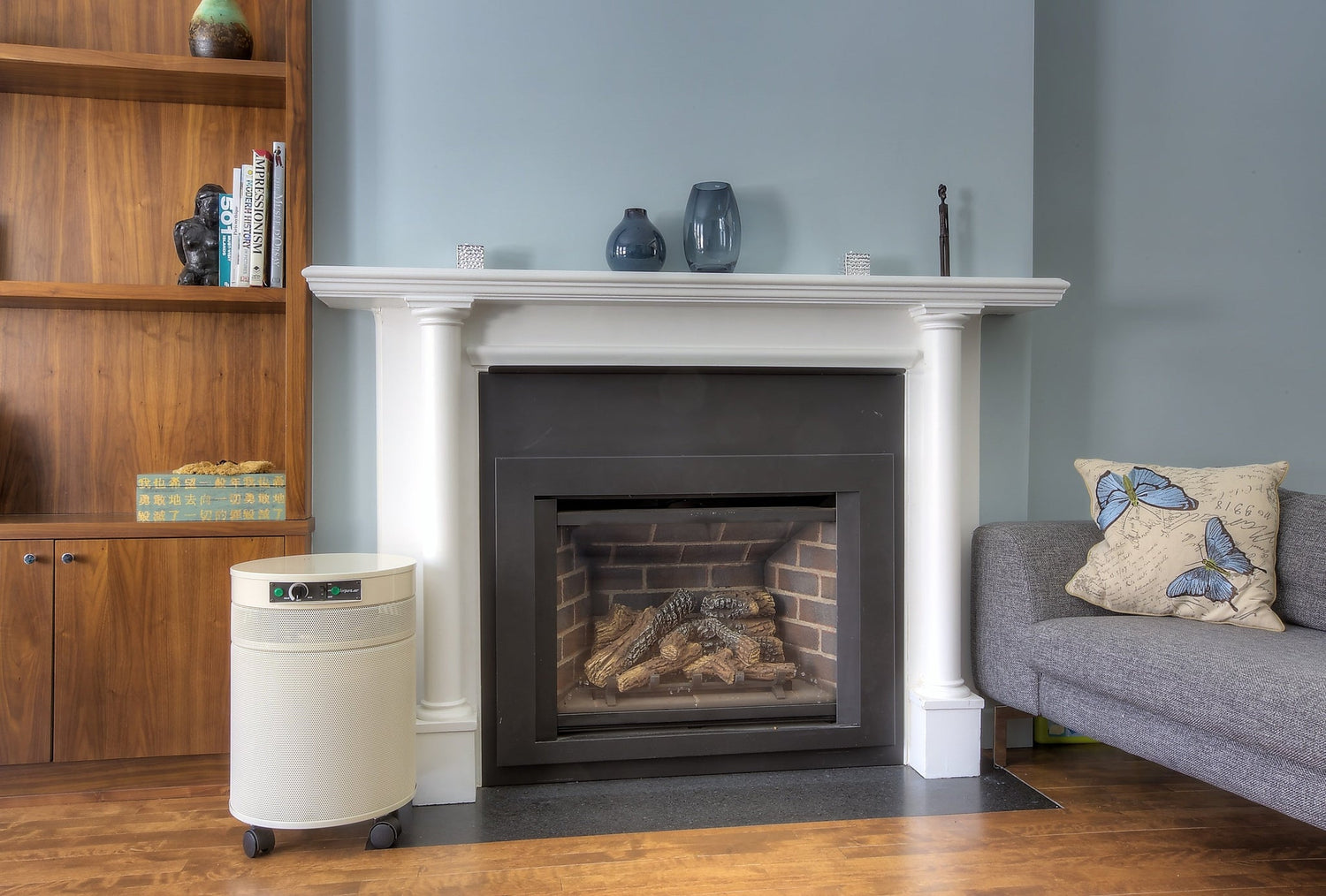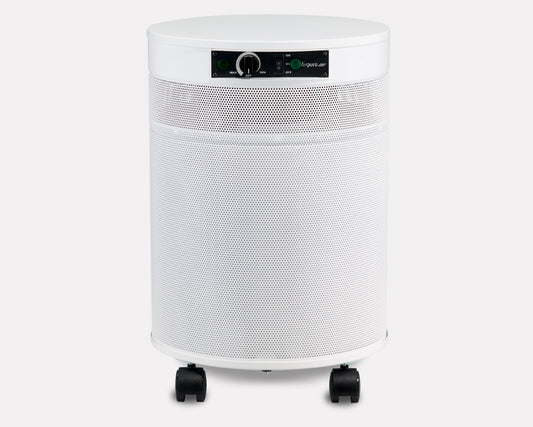How does COVID-19 spread in indoor settings?
- COVID-19 is caused by the SARS-CoV-2 virus, which spreads between people, mainly when an infected person is in close contact with another person.
- The virus can spread from an infected person’s mouth or nose in small liquid particles when they cough, sneeze, speak, sing or breathe heavily. These liquid particles are different sizes, ranging from larger ‘respiratory droplets’ to smaller ‘aerosols’.
- Aerosol (airborne) transmission is similar to droplet transmission except that the contaminated particles are much smaller and can linger in the air for hours. It can linger in poorly ventilated indoor spaces, spreading farther than 6 feet from its source.
- Transmission can occur more easily in crowded places with no social distancing and poor ventilation.
How does an Air purifier work?
Air purifiers were first developed in the 1800’s and the technology has steadily evolved over the years.
Here’s how they work:
- Air purifier filters utilize fine sieves that filter particles out of the circulating air. As air flows into the air purifier, the finer the sieve inside of the air purifier, the smaller the particles it will trap.
- High Efficiency Particulate Air filters (HEPA) are the benchmark for air purifier filters, which are guaranteed to trap 99.97% of airborne particles as small as 0.3 microns in size.
- HEPA filters efficiently remove miniscule allergens such as dust, smoke, virus, bacteria, asbestos, pollen, and pet dander.
- WHO specifically recommends the use of indoor air purifiers with HEPA filters for the management of severe acute respiratory infections.
- Recent research published in the Journal of Infectious Diseases and under review at BMC Infectious Diseases suggests that air filtration can reduce the risk of transmission of measles and influenza.
- Room air conditioner filters can only capture particles 10.0 microns or larger, so they are not as efficient as air purifier filters for cleaning the air.
How do HEPA Filters and Germicidal UV light work?
- The HEPA filter can trap the viruses on the surface of the filter and prevent it from escaping back into the airstream.
- The fibers in a HEPA filter are designed to trap particles as small as 0.01 micron in diameter — just a tiny fraction of the width of a human hair.
- The CDC has claimed that: “When used properly, air purifiers can help reduce airborne contaminants, including viruses, in a home or confined space.”
- UVC radiation is a known disinfectant for air, water, and nonporous surfaces. UVC radiation has effectively been used for decades to reduce the spread of bacteria and viruses, such as tuberculosis. For this reason, UVC lamps are often called "germicidal"
- UVC radiation is commonly used inside air ducts to disinfect the air. This is the safest way to employ UVC radiation because direct UVC exposure to human skin or eyes may cause injuries, and installation of UVC within an air duct is less likely to cause exposure to skin and eyes. Some UVC lamps generate ozone. Ozone inhalation can be irritating to the airway which adversely affects the lungs in many ways.
- The UV lamps used in Airpura are classified as ‘Non-Ozone generating lamps.
Helder Pedro, the Founder and President of Airpura, says that if an UV air purifier on the market produces higher than the recommended ozone level, it can create a health risk for you and your family.
How to Use an Air Purifier When a Family Member has COVID-19 or is a Frontline worker?
If you believe you or someone in your household might have COVID-19, follow the Centers for Disease Control and Prevention (CDC) guidelines for essential steps to take, which include how to monitor symptoms, when to seek medical help, and the proper way to isolate someone who is sick.
Your primary line of defense against getting infected with COVID-19 is to maintain social distancing whenever possible, washing your hands regularly and wearing a mask.
4 important things to keep in mind
- When using an air purifier at home to help prevent transmission of the virus to other family members, experts suggest placing the unit 3 feet from the person who is sick with COVID-19.
- Run it 24 hours a day in the room where the COVID-19 patient is isolating.
- Keep the air purifier separated from anything that can obstruct airflow, such as curtains or furniture, and keep the door to the room closed.
- Avoid touching the air purifier while in use.
- When it is time for a filter replacement, wear gloves and a put on gloves and a surgical mask. Take the air purifier outside, and clean and disinfectant the exterior. Then remove the filter and dispose of it in a sealed bag.
Best HEPA Air purifier for Bacteria and viruses:
Airpura UV600 & I600-UV
Airborne and aerosolized viruses, bacteria, mold, chemicals and particles go through powerful filtration. Airpura's 18 lbs ( found in UV600) of custom blended activated carbon adsorbs chemicals, VOC's, gases, and odor. A medical grade True HEPA filter provides powerful particle reduction of 99.97% of particulate matter as small as 0.3 microns including PM2.5, pollen, dust, dander.
Read studies here: https://www.airpura.com/pages/research-and-studies


